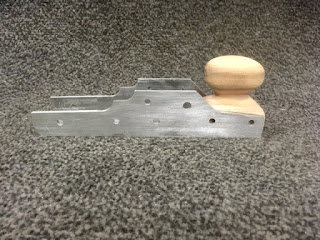As Brian Eve once noticed, whenever I am at home, my blog is pretty much dead. I don't do it on purpose, it just happens. I like to all sorts of things but to sit in front of a computer.
My family have given me a smart phone and I have accepted it, because they claimed that I could use it to take pictures with, and these would be instantly accessible on my blog.
Now it seems as though it is not the entire truth.
Brian told me that in order for the pictures to go automatically from my Iphone to Google, I needed some sort of app.
The problem is that I distrust app-stores of any kind. Technically I guess I distrust smartphones as well. So in order for me to get my pictures I have to email them to myself and then download them, save them in a folder, and then I can use the picture on my blog.
It is not that much easier than a digital camera in my opinion - but at least I have my phone with me most of the time, so perhaps there will be an increase in land based blogging in the future.
Enough abut modern technology, lets get to the interesting part:
I have been assigned to a different ship, and my schedule has changed at the same time, so that is why there has been a 9 weeks period without any real activity instead of the regular five weeks.
This new ship is currently in Africa, more exact Ghana.
As any sensible person reading this blog would do, the first things to investigate when knowing the job site is A) find out what vaccinations are needed for the area, B) find out what wood is available in that area.
Ghana Forestry Commission has an excellent site that tells you the name of the species in the local language and a lot of other information on the different types of wood that are native to the country.
I browsed their list and asked one of the local stevedores working on the ship if he knew where I could get some Bubinga.
He had a friend who did some woodcarving, and a after a bit of time I managed to explain to him that I wasn't interested in buying a carved figure of an elephant, but I would like to get some raw stock.
A bit more phone work, and I was presented with two really nice pieces of dense reddish hard wood.
I think it is Bubinga, but it could also be something else. I am not an expert on determining exotic wood species.
The two pieces each measure 3.75" x 4.5" and have a length of 24 - 28". I paid a total of 15$ for them, and I have no idea if that is above the market price down here, but I am happy, and the guy selling them seemed happy too. So I guess it was an alright deal for both of us.
In order for me to find out how this wood is to work with, I decided to make a wooden handle for a pocket knife that I found in a drawer in the engine control room.
The process itself was fairly straight forward:
I sawed off a thin piece of wood and flattened what would become the inside of the handle.
I placed the internal part of the pocket knife on the new handle parts and traced a handle shape.
A piece of aluminium scrap was filed to the same thickness as the internal part of the knife. That would become the back part of the knife.
Holes were drilled for the blade fixing screws and some 2 mm brass nails that were glued in like some sort of rivets and also for a 6 mm copper pipe that will eventually serve for a small line if needed.
My newly purchased Bubinga?
Plastic handled pocket knife.
Scrap aluminium.
Assembled and ready for shaping.






























